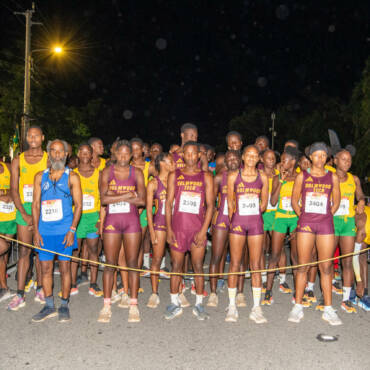As many runners are now in the early stages of their seasons, I thought I would write something on hill running. Common perception would lead us to believe that running hills makes us stronger, but how does that relate to running speed? There are actually a lot of questions that surround running hills. For example:
- If hill running makes you stronger does that mean you are faster too?
- If I can run hills well does that mean I can outrun someone on a flatter course too because I’m stronger?
- If I’m slow, will running hills make me fast?
First the short answers to the above questions:
- No, training on hills alone does not make you faster.
- No, it does not necessarily follow that if you are stronger you are faster.
- No, it does not necessarily mean that if you are faster than someone on a hilly course that you will trounce them on the flat courses.
- No, running hills does not directly make you fast.
Stride rates and stride lengths – legs – watch them!
Something I notice when watching elite runners in comparison to age-group runners is the power in their strides. There is power in every stride that thrusts the elite runners forward. And from beginning to end of races the strides remain powerful. In age-groupers the strides are abbreviated; there is excess up and down motion instead of forward; and dramatically less power in the late stages of a race. It appears that their legs are almost lifted then dropped in front of them instead of powerfully driven forward with power from the hamstrings, glutes and calf muscles. The elite runners got fast and powerful through doing running-specific strength workouts (that includes hill training) and doing fast workouts (speed work).
Hill training is integral to a comprehensive training program. Hill training is the part of a phase of training I call “speed-strength” training. Speed-strength workouts are designed to give you raw running-specific power. It prepares you for the transition to true “speed” training. This is part of what replaces the antiquated long slow distance base approach to training.
To get fast you need power – but it must be running-specific power. So, running hill repeats is a very efficient way to build that. Time spent in the weight room is not. More miles also will not. But running hills alone only makes you strong not fast. This makes logical sense. You cannot run uphill as fast as on flats or downhill. So, if you only do hill work you will be training your legs to turn over slowly – albeit powerfully. Notice that I called this initial phase SPEED-strength. In order to overcome making you strong and slow, speed work is ever-present. And it is that combination that is the trick.
As I mentioned in a previous article on hill running, research has shown that using both a gradual graded hill for longer repeats (400-800 meters) and a steeper graded hill for shorter bounding repeats (15-45 seconds) yields the best results. Also merely going out and running a trail, running a rolling hilly course and the like, are not good “hill training” approaches. Running hills passively in this manner is ineffective in making you stronger and faster. (Before I get all the hate mail on this – I am not saying to avoid trail running or running passively on a hilly course. I’m also not addressing training for a race-specific rolling hill course. I’m addressing a specific phase of training – a focused part of a training program and how to do it most effectively.)
During a hill training session I integrate fast flatland reps at the end of practice. I also keep a regular dose of track workouts in the scheme of things; once each week or every other week there is a regular track workout during this phase. Why? So you do not lose your leg speed. Once you’re done with the hill training phase you’re ready to transition to speed work. By keeping some quick stuff in your repertoire it makes your transition to the next phase smoother. Furthermore, you haven’t regressed on your overall development like you do when you follow the long slow distance base training philosophy – devoid of speed.
You get faster by lengthening your stride or quickening your stride rate. Hill training itself has not done either of these things! But it lays the ground work to do them both. Hill work builds running-specific strength which you must now use to get faster.
————————————————————————————————————-
This guest blog post comes courtesy of Ridley Ingram of Runners Stride. You can find Runners Stride on Facebook at their Facebook Fan Page
Reggae Marathon RunninGuy




